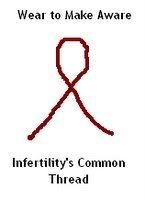
I saved this fella's life today by not making him road kill; had I not, he'd have been destined for dinner stew. (PETA can thank me later; no rush!)
Little known facts about the armadillo:
- Contrary to popular belief, the nine-banded armadillo CANNOT roll itself into a ball to escape predators!! Only one of the twenty-odd varieties of armadillos -- the three-banded armadillo (Tolypeutes tricinctus ) -- is able to roll up. The other types are covered with too many bony plates to allow them to curl up. Other armadillos have to rely on their armored shells for defense while they scuttle away through thick, thorny brush or dig themselves a hole to hide in.
- Armadillos always give birth to four identical young -- the only mammal known to do so.
- All four young develop from the same egg -- and they even share the same placenta!
- Armadillos are used in leprosy research because their body temperatures are low enough for them to contract the most virulent form of the disease.
- Some female armadillos being used for research have given birth to young long after they were captured -- up to two years afterwards, in some cases! These "virgin births" are a result of the female's ability to delay implantation of the fertilized egg during times of stress. This reproductive tactic is one reason why the 'dillos are so good at colonizing new areas (such as the United States!).
- Armadillos like to swim, and they are very good at it. They have a strong dog paddle, and can even go quite a distance underwater, walking along the bottom of streams and ponds. When they need to float, they gulp air into their intestines to make them more buoyant.
- Armadillo teeth have no enamel (the hard outer covering of the tooth). They also have very few teeth -- just several peg-like molars. Since they primarily eat insects, they don't have to do a lot of heavy chewing, making big, strong teeth a waste of energy to grow.
- Like most insect eating mammals, armadillos have a very long, sticky tongue to slurp up bugs as quickly as possible. They also are equipped with strong claws to tear open ant nests.
- Armadillos have a very low metabolic rate, which means they don't waste a lot of energy producing heat. This also means that they are not good at living in cold areas, because they can't keep warm very well! They do not have any fat reserves, so they must forage for food on a daily basis. Just a few cold days in a row can be deadly to a 'dillo.
- One way they conserve energy is through reta mirabila (Latin for "miraculous net")-- a system of veins and arteries in their legs. Hot blood going out through arteries is cooled by cold blood coming in through veins, and vice versa. This means that not much heat actually goes out into the legs, keeping it in the body. This also means they will get frostbitten very easily, since they have no way to warm their extremities through blood flow.
- Baby armadillos have soft shells, like human fingernails. They get harder as the animal grows, depositing bone under the skin to make a solid shell.
- According to the Department of Inland Fisheries and Wildlife, it is illegal to own an armadillo in the state of Maine. Hawaii has strict regulations against the import of any foreign animal, including armadillos. The state of Montana classifies them as livestock, and regulates their import accordingly.
Long live the 'dillo!




2 comments:
Wow! I had no idea!
I learned way more about armadillos than I ever wanted to know! Fascinating!
you are too funny. yes, i suspect peta should come a knockin' at your door anytime now, lol ;)
Post a Comment